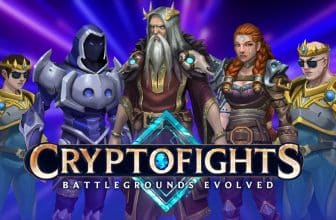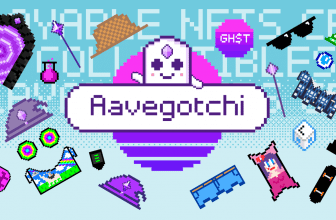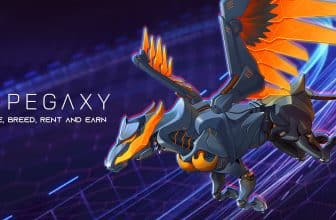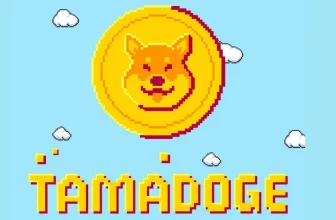This time we’ll go over an online collectible card game that uses Blockchain technology.
The game is similar to other popular collectible card games (CCG) like Pokémon, Magic: The Gathering, Final Fantasy, Hearthstone, Yu-Gi-Oh, and Gods Unchained (Check out our Gods Unchained review). Playing this game requires a blockchain wallet and a web browser.
In this Splinterlands review, we’ll look at a Play to earn NFT-based Crypto game where skilled players with the best cards earn prizes and money while playing with other players.
Each card ownership on Splinterlands represents a non-fungible token that can be traded like other NFTs in the crypto world.
There is a built-in marketplace on Splinterlands for buying and selling cards. These cards are also available on secondary marketplaces like MonsterMarket, CardAuctionz, PeakMonsters, AtomicHub, and OpenSea.
This game was originally known as Steem Monsters. When it was launched in May 2018, it was built on the Steem blockchain. The game rebranded to “Splinterlands” in April 2019 and officially left the Steem Network for the Hive blockchain in 2020.
Splinterlands was created by the developers Matthew “Yabapmatt” Rosen and Dr. Jesse “Aggroed” Reich, who was inspired by card games like Hearthstone and Magic: The Gathering. They conceived the idea of creating digital trade cards that belong to people rather than corporations.
The duo met in 2018 when they were working on a marketing platform and realized they both were interested in card games.
Matthew proposed that they should create a collectible card game. Dr. Reich revealed to him that he had one such game already in development, and together, they set on to create Splinterlands.
Splinterlands has been played millions of times since its launch in May 2018, and its in-game cards (NFTs) are valued at millions of dollars. Players are actively trading cards with one another on marketplaces.
In four years, Splinterlands has genuinely gained popularity as one of the most played crypto games in the world.
So let’s take a closer look at this game, and see what it’s all about.
Graphics & Design
Splinterlands has sleek graphics and designs that are better than most crypto games in the crypto gaming industry.
Although the design is vibrant and colorful, it has an anime feel similar to Hearthstone, which might not appeal to some users.
Splinterlands has done very well with its design. I believe the game looks nice enough for a game that is still relatively new in a much older crypto universe.
In the future, I believe the graphics and design will get better.
On its graphics and design, Splinterlands is 7 out of 10.
Gameplay
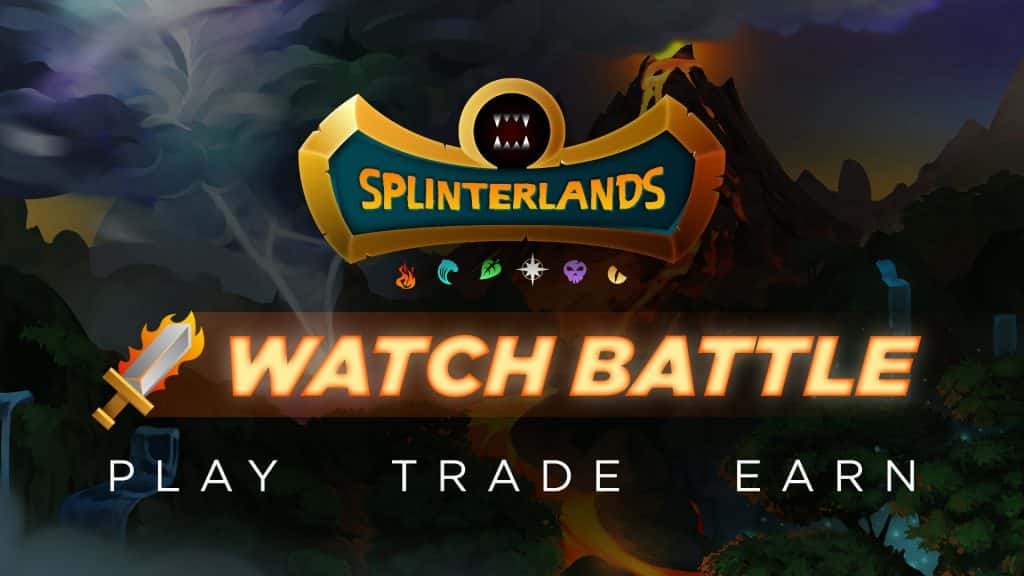
Before you play Splinterlands, you must set up your account by signing up on the game’s website. Alternatively, you can download the game app on your mobile and set up your account.
The game is available on desktops and mobile devices (Android and iOS).
In Splinterlands, players must gather cards with different characteristics to compete against other players. Players can also participate in competitions and ranked fights to earn rewards and passive income from the game.
After signing up, the game provides players with a basic set of beginner’s cards that are not NFTs. With the help of this deck of cards, players can play a few practice games and the optional tutorial to become familiar with the game’s mechanics.
Although the game offers new players a deck of cards that can be used to play, players with this set of cards can’t enjoy all the game’s features until they acquire the summoner’s spellbook, which serves as a membership pass and unlocks the full features of Splinterlands.
The summoner’s spellbook costs $10, and it’s a one-time purchase. This spellbook automatically creates accounts on the Hive Blockchain for the players. All the in-game NFTs and tokens accumulated by the players will be stored on this blockchain.
Payment for the spellbook can be made through crypto or PayPal. And once players have it (The spellbook), they can join guilds, purchase cards, and battle other players to earn rewards such as loot boxes or card packs.
Since May 31st, 2022, the summoner’s spellbook has come with new incentives – such as 3,000 credits that you can use to purchase or rent cards from the in-game shops and marketplace.
With summoner’s spellbook, the player can:
- Participate in tournaments.
- Trade assets in and out of the game.
- Earn credits and in-game currency “Dark Energy Crystals” (DEC) from battle.
- Take Daily quest and gets seasonal rewards.
- Transact on Hive Blockchain and buy cards and land.
After purchasing the summoner’s spellbook, players can move on to the main gameplay. On Splinterland, there are 3 modes of gameplay: the practice mode, the ranked mode, and the challenge mode.
- Practice Mode: In this mode, players battle other players, and the result will not affect the players’ seasonal rank.
- Ranked Mode: In this mode, the battle results affect the players’ seasonal rank by increasing their rating points for every win and reducing it for every loss. The results from this mode determine whether a player will be eligible for rewards or not at the end of the tournament or season.
- Challenge Mode: This mode allows players to participate in friendly battles. The results from this mode do not affect the player’s ranking.
To earn rewards, you must battle other players in the ranked mode. Once you choose to battle, the game automatically matches you with another player of a similar skill level to ensure fairness in the gameplay.
Once you’ve been matched with another player, the game prompts you to create a deck of cards with a summoner and 6 monster cards arranged in sequence.
To win in Splinterlands, the strategy is more important than your card’s mana (Power). The battles incorporate some randomization elements, and the rules change for every battle, depending on whether you’re playing in lower or higher leagues.
After each battle, the result would be immediately uploaded to the blockchain, where the battle’s replay can be viewed.
It’s recommended that players watch the replay to learn about different strategies and tactics used by their opponents.
The Gameplay of Splinterlands is not only fascinating but also fair to players because the chances of winning are not unfairly skewed to players with better cards. The game provides almost a level playground for players to battle each other.
I believe the gameplay is a strong 9 out of 10.
Splinterlands Review: Story
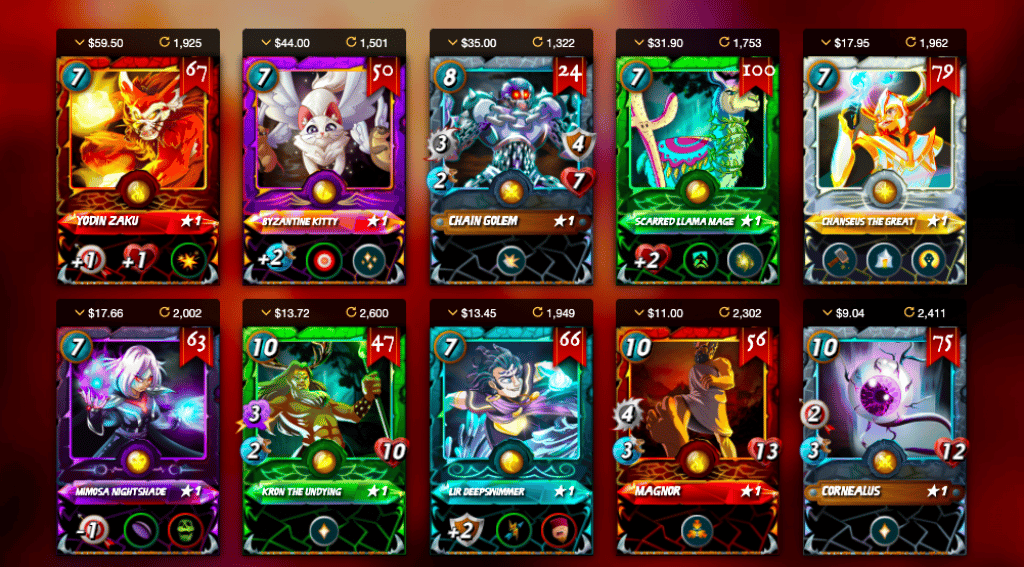
Now that we’ve understood the gameplay, let’s talk about the game’s story by considering the different components that make up the game.
Cards
As expected, cards are one of the main components of Splinterland. As a player, you can acquire these cards by purchasing booster packs or receiving them as rewards at the end of the season.
These cards are also traded on Splinterlands’ marketplace and 3rd party marketplaces like OpenSea, AtomicHub, and peakmonsters.com.
There are 3 broad groups of cards in Splinterlands: summoners, monsters, and item & spell cards. Currently, only the summoner and monster cards are used in the game.
The summoner and monster cards are collectively called “Splinters.” Splinters are like a family to which each summoner and monster card belongs. There are seven splinters families in the game: water, fire, life, death, dragon, earth, and neutral splinters.
Item and Spell cards are upcoming features in the game. These cards can only be mined from the land and sold in a secondary marketplace.
Furthermore, on the card, another vital thing to know is the stats of each card. Splinterlands has 5 main stats for cards, which are:
- Health: Indicates a card’s damage points before it is eliminated.
- Armor: It indicates the level of damage a card can bear before losing its health points.
- Attack: This shows the damage your card has caused to the opposing card.
- Speed: It indicates the speed of a card and determines how fast your card will attack or react to an attack.
- Mana: Refers to the energy or power needed to play a card.
Card Rarities are another distinct feature of Splinterlands cards. Based on their rarity, cards are divided into 2 categories:
- Supply Rarity: Refers to the number of particular cards in circulation and is also sub-classified into 4 sub-classes.
- Foil Rarity: These cards are subdivided into regular and gold foil varieties. Gold foil cards are rarer than Regular foils and give a higher collection power than regular ones. The gold card offers a 10% bonus when used in a winning battle.
Lastly, cards can also be leveled up. This happens when players combine multiple numbers of the same card to get higher-level cards.
Marketplace
Splinterlands has an in-game marketplace where players can purchase and sell cards and other in-game items.
The game also supports third-party marketplaces like CardAuctionz, OpenSea, etc.
Bidding, Buying, and Selling
The game’s marketplace supports bidding, buying, and selling. Players can explore the marketplace to find the cards most suited to their playing style and strategy.
You will also see detailed information on all cards in the marketplace.
Rentals
Instead of buying cards, players can also rent them. This is possible thanks to a feature on Hive’s Blockchain called “Assets delegation.”
Although the rental cards can be used in gameplay, they cannot be transferred, sold, or combined. Still, they can increase players’ total collection of power (CP).
Guilds
This is another feature that allows players to join resources together to earn more rewards. These rewards can be in the form of DEC bonuses or discounts on various purchases the guild initiated on the platform.
A form of Guild battle (Known as Brawls) is still under development. This feature update will enable players to battle another guild of players for increased rewards and other incentives.
Lands
One main perk of owning lands on Splinterlands is that owners can mint exclusive assets, like items and spell cards.
Since its primary sales in 2020 and 2021, lands on Splinterlands have been completely sold out. Players can now only buy lands on secondary marketplaces. The cheapest land currently sells between $200 – $300.
The highest land sale recorded on a secondary marketplace sold for close to $700,000.
Having noted all these, there is more to the game story of Splinterlands that we cannot exhaustively discuss at the moment. But based on the ones we’ve discussed, I believe you would agree that on the Game story, the Splinterlands rating is an easy 9 out of 10.
Music
The music and sounds on Splinterlands are very decent.
The background music is very catchy and upbeat, which is expected from a game based on trading, collecting, and fighting with cards. The theme also changes depending on the aspect of the game players are engaged in.
I assess the soundtrack music of Splinterlands 6/10.
Tokenomics
Splinterlands has a dual system of tokenomics.
It has a governance token and a utility token. The governance token is called the Splintershards (SPS), while the utility token is called the Dark Energy Crystals (DEC).
Splintershards (SPS)
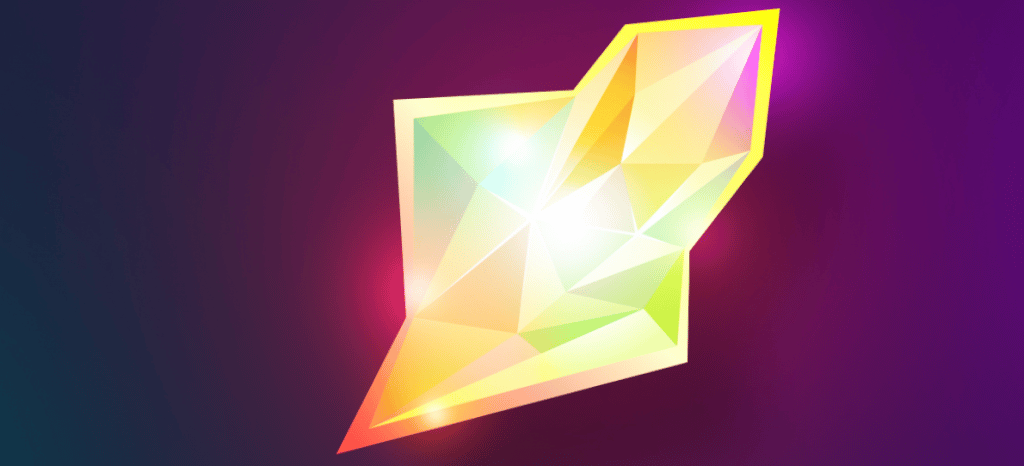
SPS is a BEP-20 token that gives its owners the right to vote on critical in-game decisions through a Decentralised Autonomous Organisation (DAO). This approach will completely decentralize the game and provide the players with significant autonomy in decisions about the game.
The total supply of SPS is around 3,000,000,000 (3 Billion) tokens, and its steady release will last for a period of 65 months from the day it was launched. The allocation proportion of SPS is as follows:
- Airdrops: Almost 33% of the SPS tokens were allocated through airdrops.
- Staking and Reward Pool: 60% of SPS tokens are reserved for players participating actively in the game’s seasons and staking SPS tokens.
- Private Sale: Almost 6% of all SPS tokens were sold in private sales. All the proceeds from these sales will be used for developing, promoting, and maintaining SPS tokens and the game’s ecosystem.
- DAO Treasury: 10% of the total supply of SPS will be held by the Foundation and controlled by the DAO.
- Team: 9% of the tokens are reserved for the game’s development team.
- Partners and Advisors: Approximately 1% of SPS is reserved for the game’s partners and advisors who will work with the SPS team in overseeing various projects and development of the game.
Players can purchase SPS on PancakeSwap, Crypto.com MEXC Global, and Sushiswap.
Dark Energy Crystals (DECs)

This is the official utility token of Splinterlands. Players earn DECs by winning battles in the game. The value of this token is pegged at $1 per 1,000 DEC, and there is a 1,000,000 (1 Million) DEC daily reward pool for players in the game.
There is also another utility token called “Splinterlands Credits.” This token is similar to DEC, but unlike DEC, it is not tradeable and can only be used to redeem some items in the game’s marketplace. Players can also earn Splinterland Credits by referring friends to register and sign up on Splinterlands.
The development team has done quite well on the game’s tokenomics. Although there is a need for some improvements, under tokenomics, Splinterlands still merit a 7 on a scale of 10.
Community
Splinterlands has enjoyed an enormous community gathering. It is the reality that for all crypto games, community drives adoption.
According to DappRadar, Splinterlands was the number 1 blockchain-based game in Q2 of 2022 by the daily active wallet. This means the game has the most active daily players among all blockchain games within that period.
The game’s community is all over the various social media platforms. However, its largest community is on discord.
On community, Splinterlands is a solid 9 out of 10.
Earning Ability
There are different ways players can earn on Splinterlands. These include:
- Taking part in the tournament.
- Ranked play.
- Partaking in various in-game Quests.
- Players selling their cards as NFTs on multiple marketplaces.
- Renting out cards to other players.
As of July 2022, according to the Splinterlands team, the game has paid out over $6,000,000 in prizes to players that win battles and tournaments.
Other prizes that can be won on Splinterlands are DEC, card packs, collectible cards, and magic potions.
Splinterlands gets 8 out of 10 ratings for its earnings abilities and potential.
Frequently Asked Questions
What is Splinterlands?
Splinterlands is an online trading card game (TCG) built on the blockchain.
Can I earn on Splinterlands?
Yes, Splinterlands is a play-to-earn crypto game that allows players to earn passive income by playing the game.
Do I need money to play Splinterlands?
No, Splinterlands is free to play. However, if you want to earn, you must purchase the summoner’s spellbook.
What is SPS?
Splintershards is the governance token of the game Splinterlands.
What is DEC?
Dark Energy Crystals are the utility token of the game.
The Bottom Line
Splinterlands is one of the best blockchain-based games in the crypto gaming industry. Thanks to its developers and team, the game has some of the best features in the GameFi (Gaming Finance) Industry.
However, it can take some time before a player fully grasps the game’s concept. Even though the gameplay is automated and relatively straightforward, it can sometimes get confusing.
Many content creators in the Splinterlands community can guide you in your first steps and make you understand all the details you need to make your journey easier as a new player.
The various calculations for the play-to-earn mechanism are also technical, especially for new players. But thanks to its solid community presence, you can easily navigate through the game by checking the community channels.
Overall, Splinterlands is an excellent game, worthy of your time, attention, and money.
In a broken world, shattered by the cataclysmic Splintering, only one thing is certain: conflict. Factions vie for control of what little land remains, and powerful monsters are summoned to do their bidding. In the midst of this chaos, players will find themselves fighting for survival in the unique card game Splinterlands. Splinterlands is a fast-paced and action-packed card game that can be enjoyed by players of all ages. With easy-to-learn rules and exciting gameplay, each match takes only a few minutes to complete. What's more, Splinterlands can be played anytime, anywhere, on both desktop and mobile devices.
- It's free to play.
- Lots of money prizes over the years.
- Available on both mobile devices and desktops.
- It can be challenging to understand the game’s concepts.
- Players need to purchase a summoner’s card before they can enjoy the play to earn benefits of the game.
- There are noticeable bugs and lags during gameplay.
Vova Feldman
Entrepreneur, inventor, investor, crypto believer. Always trust the process, persist, and don't let the a-holes get you down.






